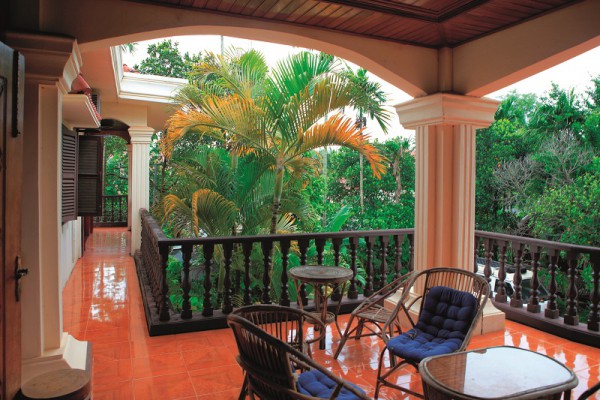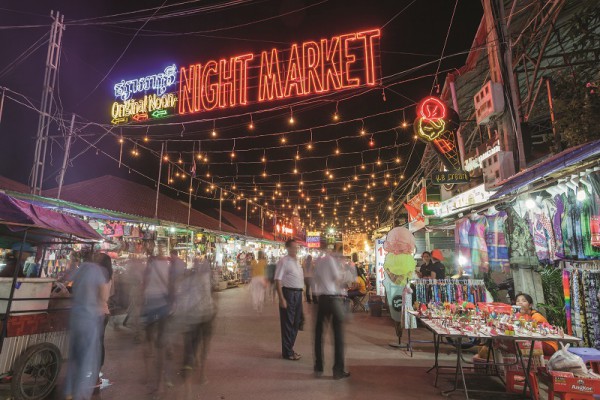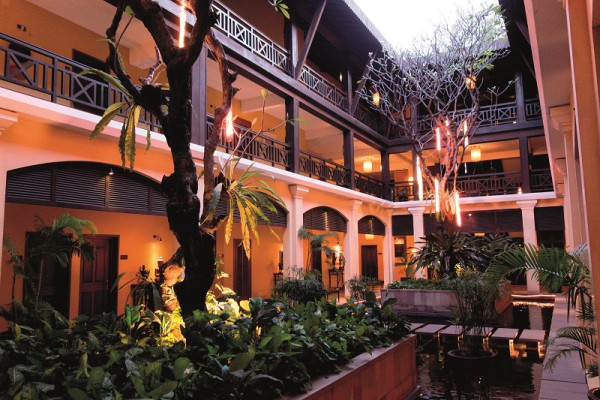To many, Siem Reap is the place to go to for holidays filled with real old-world charm that is also packed with the energetic optimism of modernity. Indeed, the city has been ranked this year as the world’s second best holiday destination by TripAdvisor. What is important to note about the local property market, insofar as it is premised on the growth of the tourism sector, is its connections to a trend common in low-cost tourism particularly pertinent to Asia, known as mass-Asian tourism. This is where many well-heeled entrepreneurs and investors, especially from China, Vietnam and in some cases Korea, are monopolising their sections of the Siem Reap hospitality market.
For example, a Chinese tourism company active in Asia, and with a branch in Siem Reap, attracts Chinese visitors looking for a low-cost vacation in the city. This same company often also builds, or buys, and owns hotels and restaurants in Siem Reap. Their guests will visit, and may even get cuts from local sites of interest that their clients go to. What this means is that there is a bifurcating story that one must be mindful of—while tourism may be booming, the trick to benefitting from this for property investors is not to simply own property expecting value-appreciation to be in line with general economic growth, but to structure one’s investments to directly leverage on the tourism dollar. This is because much of that tourism income growth is not likely to be flowing directly into the local Cambodian tourism market, or into too many Cambodian hands, unlike the usual investment propositions and strategies in other high-growth markets.
Such a phenomenon is also presenting a second anomaly to the Siem Reap property market—demand for land in the city center may also be limited. This is because many tourism vendors—by virtue of their clout in the city—can and do choose cheaper destinations outside of the city centre. This explains why many of them do not operate in areas with high tourist traffic, since their clients form their own captive market. All of this indicates that the rules of play in the Siem Reap property market are and will continue to be very different from many other cities. The clear conclusion from this is that prices in the city center and those in the outskirts, should not be too different, which is indeed the case.
According to Numbeo, the world’s largest online database of costs and standards of living in various cities based on contributions from the site’s users, price-to-rent ratios in the city center and those beyond are 15:21 and 15:04 respectively. A difference of merely 1.1%. Gross rental yields are 6.58% and 6.65%, showing again a minuscule gap of 1%.

According to research by Key Real Estate, a local real estate agency, the Siem Reap property market can be divided into nine zones, with the top three most expensive zones currently priced as follows:
| Zone | Description of Locale | Prince Range (US$/sq.ft) |
| A | Pub Street and main tourism hub | $158-465 |
| B | Central Market to National Road 6 | $93-279 |
| C | Angkor Night Market | $93-279 |
The other six zones (D-I) mostly cover a mix of residential districts and boutique hotels, or local residential neighbourhoods, schools and various facilities. Prices range from US$42- US$74/sq. ft. for sub-roads, to US$112-US$186/sq. ft. for areas located right by the main arterial networks.
Other factors to watch include standard demand and supply, however. Charles Villar, CEO of Key Real Estate, observes that Siem Reap has lower local demand compared with Phnom Penh, especially if one is talking about opportunities beyond the usual hospitality and tourism sectors. This point is in line with the picture painted by the numbers available. Although Siem Reap alone accounted for over 50% of tourists into Cambodia, its land prices in key areas have stayed somewhat stagnant. This suggests that there is huge potential in this market, because when businesses in other sectors expand from Phnom Penh into Siem Reap—the next most viable locale in the country—demand for property will spike, and it is only a matter of time before this happens.

This model is not even an alien one to the country. Currently, there are plenty of modern condominiums and malls in Phnom Penh, including the Aeon Mall. It is essentially a matter of replicating a model that has already been tried and tested in Siem Reap. In this regard, the basic premises for a boom in the Siem Reap property market, beyond that of tourism and hospitality, are already in place. Suffice to say, that opportunities in Siem Reap are ripe for the picking, but there are different rules that one needs to play by, to come out smiling from the thicket.
Story Credits
Text by Willy Yeo
This article was originally published in PALACE

